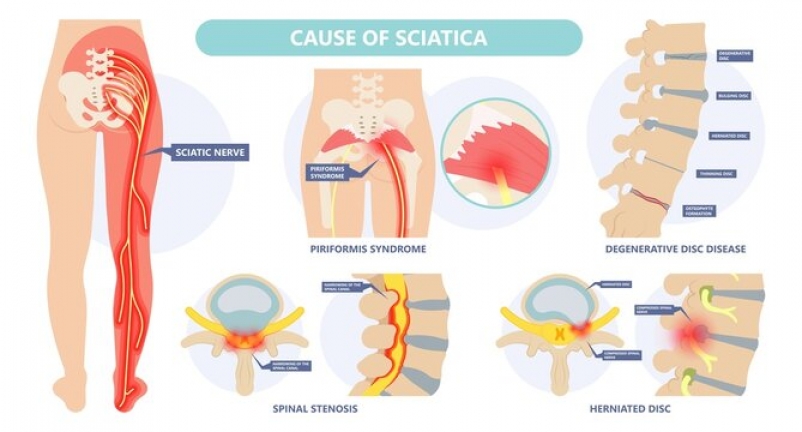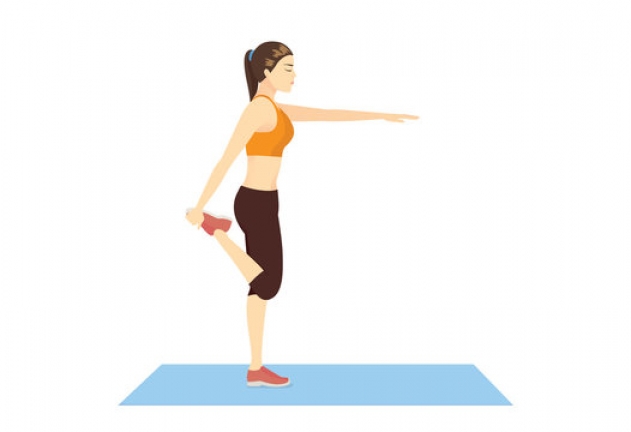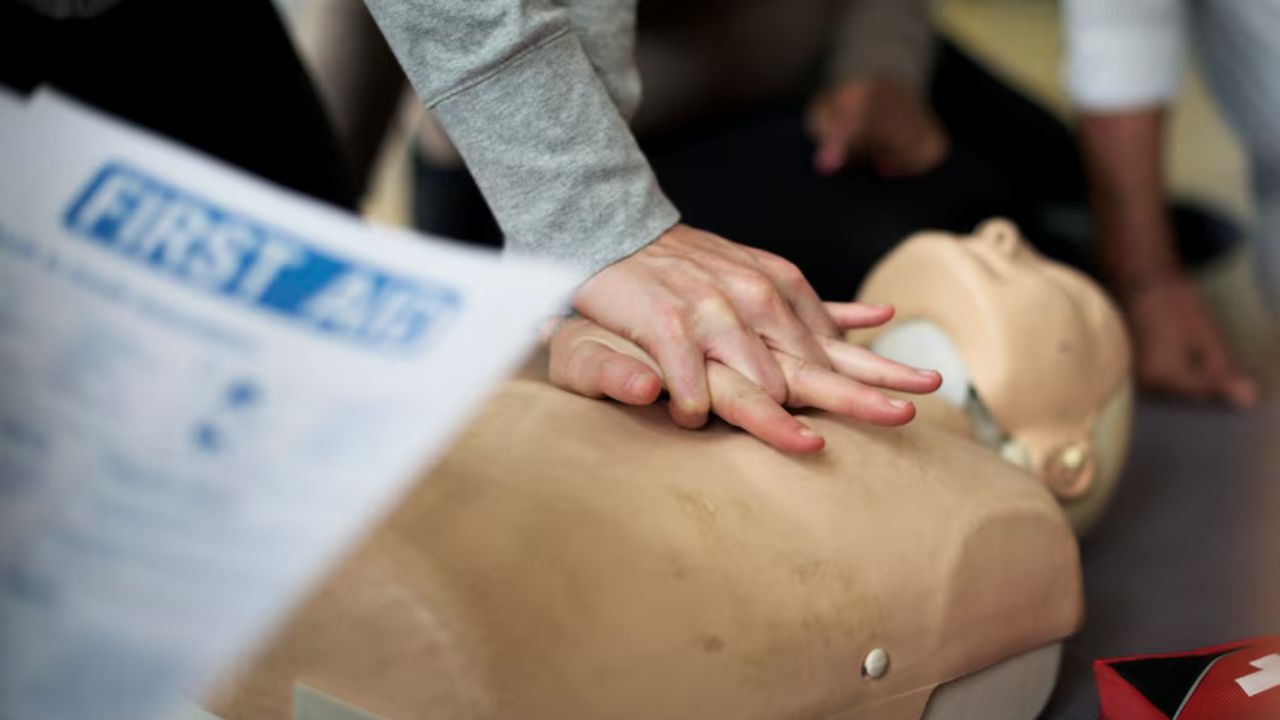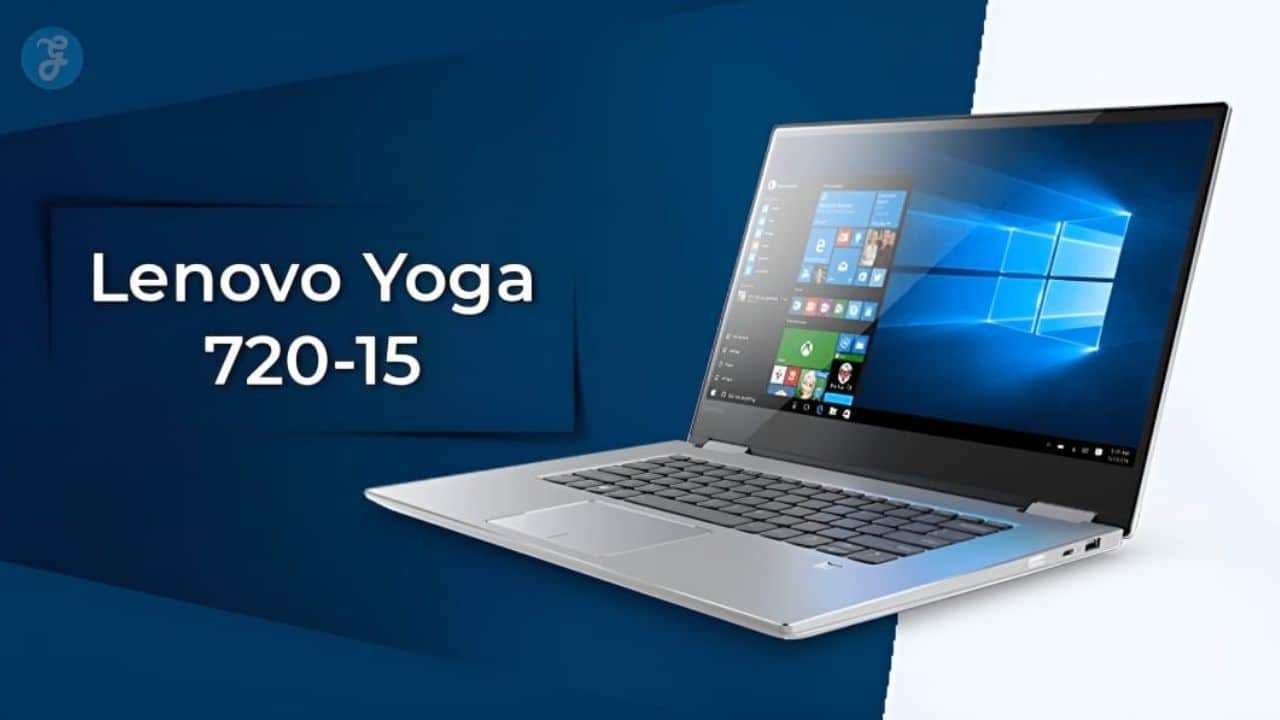Listen to the Podcast:
Are you experiencing sciatic nerve pain after knee replacement? Are you wondering how to manage it? Prominent Neurologist Assistant Professor Dr Anusha D. explains it in depth in this article. Stay tuned with us.
The technique for knee replacement surgery has evolved, becoming more “tissue-sparing,” which means that we no longer cut through significant muscles and tendons as we used to, reducing pain during recovery and the amount of time required to heal after surgery. It also aids the patient in maintaining a more “natural-feeling” knee. However, surgical technique has not evolved, so we can avoid cutting all nerves in the skin and tissue around the knee when making surgical incisions.
This article will explain the causes, symptoms, and treatment for sciatic nerve pain after knee replacement surgery, along with several prevention techniques.
What is Nerve Pain?
Neuropathic pain, also called nerve pain, is caused by a problem in the nervous system, usually in the central or peripheral somatosensory parts. People with neuropathic pain often feel on fire, get electric shocks, or feel a painful cold feeling. Symptoms may also include strange and unpleasant feelings, such as paresthesia, prickling, dysesthesia, distorted feeling, itching, and numbness. Pain from inflammation is not the same as pain from nerves.
Nerve Pain After Knee Replacement

Knee osteoarthritis (OA) is often treated with knee replacement surgery. One of the main reasons for the surgery is to ease the pain caused by the condition. Neuropathic pain is often caused by knee osteoarthritis (OA). Hockman and his colleagues did a study on older people. Out of the 259 people in the study who had knee OA, 66% said they were in pain, and 28% of that pain was neuropathic. More than 25% of older people with knee osteoarthritis who say they have nerve pain feel it in the knee area.
Even after getting a new knee, many people still have nerve pain. Researchers found that about 13–14% of people with knee osteoarthritis who had knee replacement surgery still had nerve pain 6 months after. One study found that people who said they had neuropathic pain 1.5 to 3.5 years after a total knee replacement had a lot of pain. This was compared to people who didn’t say they had any persistent pain after knee surgery.
Another study found that 20% of knee replacement patients had pain that didn’t go away. Of those, 11% had nerve pain that worsened between 6 weeks and 3 months after surgery. Neuropathy pain symptoms are strongly linked to more pain, which can hurt a person’s mental health and quality of life. In the same way, people with neuropathic knee pain are more likely to be disabled.
Causes of Sciatic Nerve Pain After Knee Replacement Surgery
The sciatic nerve is the largest and longest nerve in the human body, extending from the lower back through the hips, buttocks, and down each leg. It connects the spinal cord to the muscles and skin of the legs and feet, enabling movement and sensation. While the sciatic nerve does not directly connect to the knee joint, it plays a crucial role in the overall function of the lower limbs, including the knee.
There are several reasons why sciatic nerve pain can occur after knee replacement surgery. Some of these reasons include the following:
- Nerve damage during surgery: Inadvertent damage or irritation of the nerves surrounding the knee joint may lead to sciatica as the body attempts to heal itself.
- Post-operative inflammation and swelling: Inflammation and swelling are common after surgery, and they can put pressure on the sciatic nerve, causing pain and discomfort.
- Misalignment of the knee joint: Improper alignment during surgery can result in imbalances in the body, contributing to sciatica.

Complications After Knee Replacement Surgery
Some possible complications could happen after knee replacement surgery.
Postoperative Pain Complication
The Journal of the American Academy of Orthopaedic Surgeons says there is much pain after knee replacement surgery. And that pain stays mostly the same for a long time after surgery. So, people with this kind of surgery must take painkillers after knee surgery to heal well and start physical therapy.
Pain after knee surgery is usually treated with painkillers through an intravenous (IV) drip or an epidural. But the Journal of the American Academy of Orthopaedic Surgeons says that a peripheral nerve block is the most recent way to deal with sciatic nerve pain after surgery.
Rehabilitation Complication
In the past, when a patient with sciatic nerve pain after knee surgery used traditional methods to treat the pain, it sometimes meant that they couldn’t do the needed physical therapy because the pain wasn’t gone. This makes it harder to reach necessary rehabilitation goals and keeps the patient in the hospital longer. So, effectively treating sciatic nerve pain can help the patient finish rehabilitation therapy and go home.
Other Possible Complications
The sciatic nerve can cause more problems than just unbearable nerve pain if it is pinched or hurt, which can happen during knee replacement surgery or in other ways. Some of these problems can include being unable to control your bowels and bladder and not being able to move or feel the leg that had surgery.
By knowing how the sciatic nerve connects to the knee joint and the risks, patients can reduce their chances of getting sciatic nerve pain after knee replacement surgery and make sure they have a smoother recovery.
Related Reading: Swollen Foot After Knee Surgery
Symptoms of Sciatic Nerve Pain After Knee Replacement
Common symptoms of sciatic nerve pain include:
- Sharp, shooting pain typically begins in the lower back and radiates down the leg, following the sciatic nerve path. It may worsen when sitting, standing, or walking.
- Numbness and tingling: Patients with sciatica may experience numbness, tingling, or a “pins and needles” sensation in the affected leg.
- Muscle weakness: Sciatica can lead to muscle weakness in the affected leg, making it difficult to walk or perform daily activities.
Differentiating between sciatic nerve pain and other post-operative pain can be challenging, but there are some key differences to consider:
- Location of pain: Sciatic nerve pain follows a specific path, starting from the lower back and travelling down the leg. Other post-operative pain may be localized to the knee joint or surrounding areas.
- Nature of pain: Sciatica is characterized by sharp, shooting pain accompanied by numbness and tingling, whereas other post-operative pain may be more of a dull ache or throbbing sensation.
- The onset of pain: Sciatic nerve pain may develop gradually over time or suddenly. Other post-operative pain is typically expected shortly after surgery and diminishes as the healing progresses.
If you suspect experiencing sciatic nerve pain after knee replacement surgery, it is important to consult with your healthcare provider. They can help determine whether your symptoms are due to sciatica or other post-operative complications and recommend appropriate treatment options to alleviate discomfort and facilitate recovery.
How to Diagnose Sciatic Nerve Pain?
Diagnosing sciatic nerve pain typically involves a combination of a physical examination and medical tests. Here is a simple explanation of the process:
Physical Examination
Your healthcare provider will ask about your symptoms, medical history, and any activities that trigger or worsen your pain. They may also perform a physical examination, which includes checking your muscle strength, reflexes, and flexibility in the affected leg.
Straight Leg Raise Test
During this test, your healthcare provider will ask you to lie on your back and raise your leg while keeping it straight. If this movement causes pain or discomfort, it may indicate sciatica.
Imaging Tests
Sometimes, your healthcare provider may order imaging tests to confirm the diagnosis and determine the underlying cause of your sciatic nerve pain. These tests may include X-rays, magnetic resonance imaging (MRI), or computed tomography (CT) scans.
By carefully evaluating your symptoms and conducting appropriate tests, your healthcare provider can accurately diagnose sciatic nerve pain and recommend the most suitable treatment options.
Treatment Options for Sciatic Nerve Pain After Knee Replacement
Treatment options for sciatic nerve pain after knee replacement surgery can be divided into conservative and surgical approaches. Here is an overview of these options:
Conservative Treatment Options
Physical therapy: A physical therapist can teach exercises to strengthen muscles, improve flexibility, and alleviate sciatica symptoms.
Pros: Non-invasive and can improve overall fitness.
Cons: It may require regular appointments and take time to see results.
Pain medication: Over-the-counter pain relievers (ibuprofen) or prescription medications can help manage pain.
Pros: Provides quick relief from pain.
Cons: It may cause side effects and is not a long-term solution.
Ice/heat therapy: Applying ice or heat to the affected area can help reduce inflammation and soothe the pain.
Pros: Easy to do at home and has minimal side effects.
Cons: Provides temporary relief and may not address the root cause of the pain.
Surgical Treatment Options
Nerve decompression surgery involves removing the source of pressure on the sciatic nerve, such as a herniated disc or bone spur.
Pros: Can provide long-lasting relief and address the root cause of the pain.
Cons: Involves risks associated with surgery and requires a longer recovery time.
Related Read: Causes and Symptoms of Back Pain
Sciatic Nerve Pain After Knee Replacement: The Prevention
We have listed 9 tips to prevent sciatic nerve pain after knee replacement.
- Consult your surgeon: Before knee replacement surgery, consult your surgeon about potential risks and complications, including sciatic nerve pain. They can guide preventive measures tailored to your specific needs.
- Physical therapy: Engage in pre- and post-surgery physical therapy to strengthen your muscles and improve flexibility. This can help prevent muscle imbalances, reduce stress on your lower back, and minimize the risk of developing sciatic nerve pain.
- Maintaining a healthy weight: Carrying excess weight can strain your spine and lower back, leading to sciatic nerve pain. Maintaining a healthy weight can help alleviate this stress and reduce your risk.
- Proper posture: Practice good posture when sitting and standing to reduce the pressure on your lower back and spine. This can help prevent the onset of sciatic nerve pain.
- Supportive footwear: Wear shoes that provide proper support for your feet, as this can help maintain proper alignment and reduce strain on your lower back.
- Gentle stretching: Incorporate regular, gentle stretching exercises into your daily routine to keep your muscles flexible and prevent stiffness. Focus on your lower back, hips, buttocks, and legs, as tight muscles in these areas can contribute to sciatic nerve pain.
- Low-impact exercise: Engage in low-impact activities, such as walking, swimming, or cycling, to help maintain your overall fitness and reduce the risk of developing sciatic nerve pain.
- Avoid prolonged sitting: Sitting for extended periods can pressure your sciatic nerve. Make an effort to stand, walk, or change positions regularly throughout the day to minimize this risk.
- Proper lifting technique: Use proper lifting techniques to avoid straining your lower back when handling heavy objects. Bend your knees, keep your back straight, and engage your core muscles to lift safely and protect your spine from injury.
Exercises and Stretches for Sciatic Nerve Pain
With some exercise and stretches, sciatic nerve pain can quickly recover. But before doing any exercise or stretches, consult your doctor. Here are 5 exercises and stretches for sciatic nerve pain.
Knee-to-chest stretch
- Lie on your back with your legs extended and feet flat on the floor.
- Bend one knee and bring it towards your chest.
- Grasp your knee and gently pull it closer to your chest.
- Hold for 15-30 seconds, then slowly release and switch legs.
- Repeat 2-3 times on each side.
Seated spinal twist
- Sit on the floor with your legs extended in front of you.
- Bend your right knee and place your right foot outside your left thigh.
- Keep your left leg straight or bend it so that your left foot is near your right hip.
- Place your right hand on the floor behind you for support.
- Bring your left arm over your right thigh and gently twist your upper body to the right.
- Hold for 15-30 seconds, then slowly release and switch sides.
- Repeat 2-3 times on each side.
Pigeon pose
- Begin on all fours in a tabletop position.
- Bring your right knee forward and place it behind your right wrist.
- Extend your left leg straight behind you, with your toes pointed.
- Keep your hips square and level as gently lower your upper body toward the floor.
- Hold for 15-30 seconds, then slowly release and switch sides.
- Repeat 2-3 times on each side.
Standing hamstring stretch
- Stand upright with your feet hip-width apart.
- Place your right heel on a low surface, such as a step or a stack of books.
- Keep your right leg straight and your toes pointed upward.
- Gently lean forward, keeping your back straight, until you feel a stretch in your right hamstring.
- Hold for 15-30 seconds, then slowly release and switch legs.
- Repeat 2-3 times on each side.
Cat-Cow stretch
- Begin on all fours in a tabletop position, with your hands directly under your shoulders and your knees under your hips.
- Inhale as you arch your back, lifting your chest and tailbone towards the ceiling (Cow pose).
- Exhale as you round your back, tucking your tailbone under and bringing your chin towards your chest (Cat pose).
- Move slowly between these two positions for 5-10 breaths.
Lifestyle Changes to Manage Sciatic Nerve Pain

Changing your daily life can help you manage sciatic nerve pain more effectively. Here are some suggestions:
- Take breaks: If you sit long, take regular breaks to stand up, stretch, and walk around. This can help prevent stiffness and alleviate pressure on the sciatic nerve.
- Lift properly: Use correct lifting techniques to avoid straining your lower back. Bend at the knees, keep your back straight, and engage your core muscles when lifting heavy objects.
- Sleep well: Ensure a supportive mattress and pillow maintains proper spine alignment. Try sleeping on your side with a pillow between your knees to reduce pressure on the sciatic nerve.
- Stay active: Engage in low-impact exercises like walking or swimming to keep your muscles strong and flexible. This can help alleviate sciatic nerve pain.
- Manage stress: Practice stress-reduction techniques, like deep breathing exercises or meditation, as stress can exacerbate pain.
Final Thoughts
Experiencing sciatic nerve pain after knee replacement surgery can significantly impact your quality of life. It is essential to seek medical attention promptly, as early diagnosis and treatment can prevent further complications and promote faster recovery. Your healthcare provider will help you explore various treatment options tailored to your needs, including physical therapy, medication, and lifestyle modifications.
Stay open to trying different treatments and remain patient, as finding the most effective solution for your sciatic nerve pain may require some experimentation. With the proper care and persistence, you can successfully manage your pain and return to enjoying your daily activities.
Frequently Asked Questions (FAQs) about Sciatic Nerve Pain After Knee Replacement
Below we tried to answer some commonly asked questions on sciatic nerve pain after knee replacement.
Is it common to get sciatica after knee replacement?
It is rare to have sciatic nerve palsy after a total knee arthroplasty that is accompanied by weak muscles and electromyographic evidence.
What are the symptoms of nerve damage after knee replacement surgery?
Nerve pain can feel like a burning sensation, an electric shock, or a painful cold feeling. Some symptoms, like paresthesia, dysesthesia, itching, and numbness, are strange and unpleasant.
How long does nerve pain last after knee replacement surgery?
How long it takes for each person to feel no pain is different. This is called a “recovery timeline” by most people. Most patients feel less pain within 3–5 weeks.
What helps nerve pain after total knee replacement?
Most of the time, a peripheral nerve block relieves pain for several days to weeks. We may also suggest radiofrequency ablation if it helps with pain for a longer time. With this simple office procedure, pain signals from your knee to your brain can be blocked for several months to a year.
What pain is normal after knee replacement?
Moderate to severe pain, swelling, and bruising are common after the anaesthetic wears off. Your doctor will give you prescription painkillers to use after surgery. For a few weeks after knee surgery, you may experience pain during normal activities and while you sleep.
This Opinion is written by Assistant Professor Dr Anusha D. DM (Neurology), DNB (Neurology).
Disclaimer: If anyone seeks medical advice, diagnoses, or the proper treatment, please take advice or consult with a specialist physician directly.















































